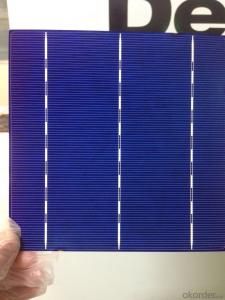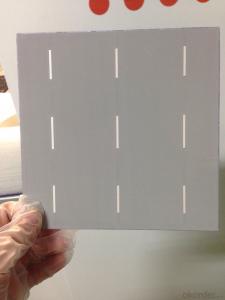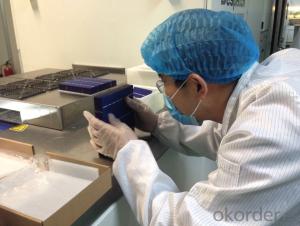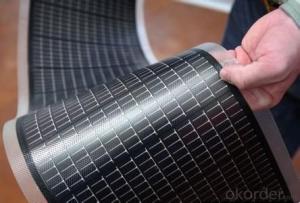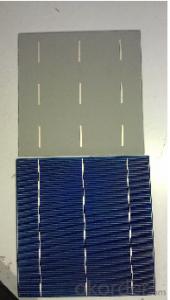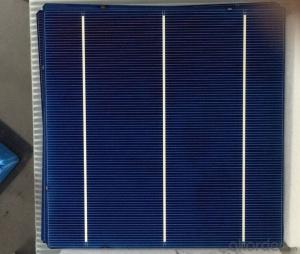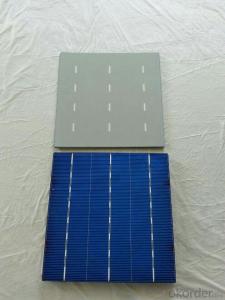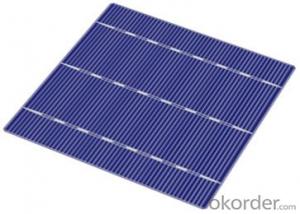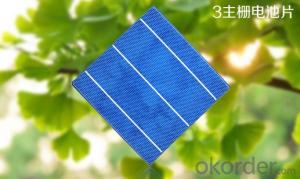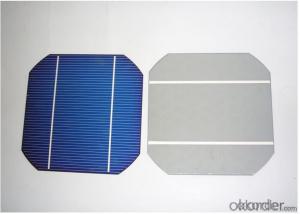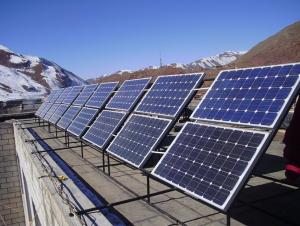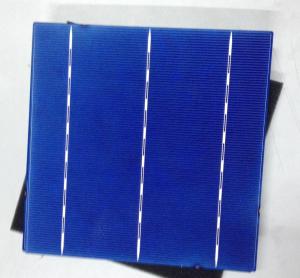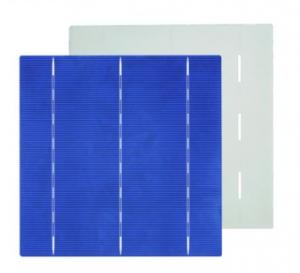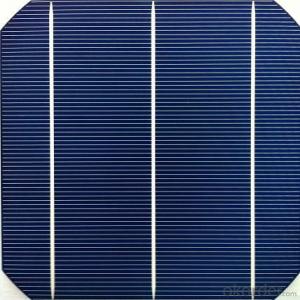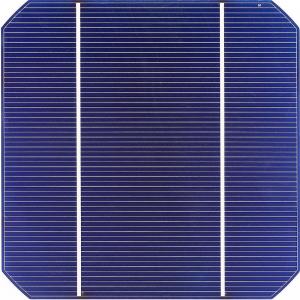String Ribbon High Efficiency and High Power Solar Cells 3bb
- Loading Port:
- Shanghai
- Payment Terms:
- TT OR LC
- Min Order Qty:
- 20000 pc
- Supply Capability:
- 2000000 pc/month
OKorder Service Pledge
OKorder Financial Service
You Might Also Like
Specification
Advantages of Monocrystalline Solar Cells
1. High efficiency and High power.
2. Long-term electrical stability.
3. Lowest price and Fastest delivery.
4. Good quality and good service.
5. Bulk supply
6. Good Warranty
7. Big Sale
8. More than 25 years on the lifetime.
Specifications of Monocrystalline Solar Cells
Format:125 mm × 125mm ± 0.5 mm
Thickness- : 210μm ± 40 μm
Front (-):1.5mm bus bars (silver),blue anti-reflection coating (silicon nitride)
Back (+) :2.5mm wide soldering pads (silver) back surface field (aluminium)
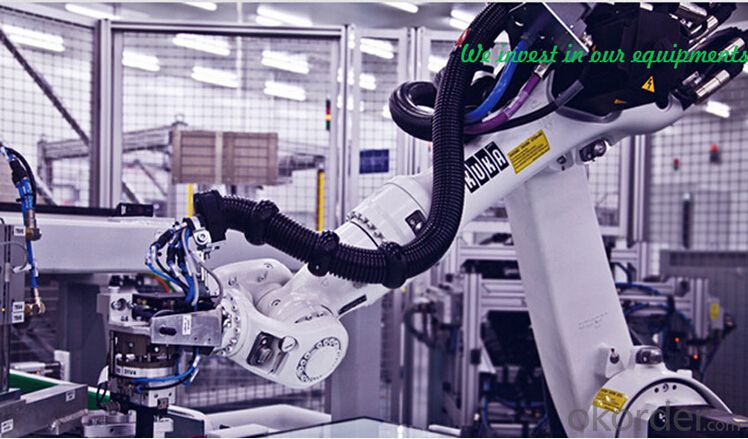

Temperature Coefficient of Monocrystalline Cells
Voc.Temp .coef.%/K: -0.351%/K
Isc.Temp .coef.%/K : +0.035%/K
Pm.Temp. coef.%/K: -0.47%/K
Usage and Applications of Monocrystalline Cells
Solar cells are often electrically connected and encapsulated as a module. Photovoltaic modules often have a sheet of glass on the front (sun up) side, allowing light to pass while protecting the semiconductor wafers from abrasion and impact due to wind-driven debris, rain, hail, etc. Solar cells are also usually connected in series in modules, creating an additive voltage. Connecting cells in parallel will yield a higher current; Our solar cells have passed IEC Certification. With high quality and stable quality. Our Cells can greatly improve the performance of Solar Modules.
Packaging & Delivery of Monocrystalline Cells
Carton Box Package and Deliver by air. It should be noticed that it should be avoid water, sunshine and moist.
FAQ:WHAT'S THE ADVANTAGES OF CNBM?
1.CNBM is a state-owned company under jurisdiction of central goverment , one of Fortune 500 .Just because of this ,we can get more support and resources from our government.So ,it is realiable .
2.CNBM's solar products are high-qualified with TUV,UL,VDE,CE,ISO certificates. Our products ranges top in China.
3.Just as I mentioned in attahment ,we signed 500MW project with Urkan under the witness of our chairman Xi Jinping ,CNBM has ability to meet your large quantity needs,Our annual capacity is 1GW.
4.We can offer you a competitive price .Because you are our potential and valued customer .
5.We ,CNBM ,has our own factory :CNBM JETION SOLAR .We can also customize according to customers' need . You can google our factory .
FAQ: How many kinds of solar cells can we produce?
•: We can supply the normal 2 kinds of solar cells, Poly 156mm*156mm and Mono125mm*125mm , and the special demension also can be produced .
FAQ:What's the effeciency range of the solar cells?
•: We can supply 16.8% to 18.9% effeciency of the solar cells.
Cell-To-Module Performance (CTM)
1.CNBM Solar improves cell-to-module ratio by:
2.Narrowing down efficiency bin range to 0.2%.
3.Defining efficiency bins by minimal power and 97% of current at maximum power.
4.Customers can manage and control module power output distribution.
5.Customers get more value for their money.
6.Long-Term Reliability
7.High Shunt Resistance
8.Low LID (Light-Induced Degradation)
9.Frequent internal monitoring of LID.
- Q: Can solar cells be used for powering concert venues?
- Yes, solar cells can be used for powering concert venues. Solar panels can be installed on the roof or surrounding areas of the venue to capture sunlight and convert it into electricity. This renewable energy source can help reduce the carbon footprint of the venue and provide a sustainable solution for powering concerts.
- Q: How do people price solar cells? Is it based on a specific way of calculating the cost of solar cells?
- Mostly the cost of solar cells goes to the installation, construction and maintenance. Therefore the price would be higher than what we expected.
- Q: How do solar cells affect air pollution?
- Solar cells help reduce air pollution by generating clean, renewable energy from the sun. Unlike traditional fossil fuel power plants that release harmful pollutants like carbon dioxide, sulfur dioxide, and nitrogen oxides into the air, solar cells produce electricity without any emissions. By replacing fossil fuels with solar energy, we can decrease the amount of air pollution, mitigate climate change, and improve overall air quality.
- Q: How do solar cells handle hail or other physical damage?
- Solar cells are designed to be durable and withstand various weather conditions, including hail or physical damage. The cells are typically made of tempered glass, which is highly resistant to impact. Additionally, solar panels are tested and certified to meet certain industry standards for hail resistance. In the event of severe damage, such as a shattered panel, individual cells can be replaced without affecting the overall performance of the solar system.
- Q: How do solar cells perform in areas with high levels of wildfire smoke?
- Solar cells can experience a decrease in performance in areas with high levels of wildfire smoke due to reduced sunlight reaching the surface. The smoke particles in the air can scatter and absorb sunlight, resulting in lower energy production. Additionally, the deposition of ash and soot on the solar panels can further reduce their efficiency. Regular cleaning and maintenance can help mitigate these effects to some extent.
- Q: What is the effect of shading on solar cell performance?
- The effect of shading on solar cell performance is significant as shading can reduce the overall power output of the solar panels. When even a small portion of the solar cell is shaded, it creates a "hot spot" effect, leading to increased resistance and reduced electrical current. This can result in a notable decrease in energy production, impacting the overall efficiency and performance of the solar cell system.
- Q: What is the role of solar cells in powering agricultural irrigation?
- The role of solar cells in powering agricultural irrigation is to harness the energy from the sun and convert it into electricity, which can then be used to power irrigation systems. By using solar cells, farmers can reduce their reliance on fossil fuels and decrease their carbon footprint, while also ensuring a consistent and sustainable source of power for their irrigation needs. This renewable energy source helps to make agricultural irrigation more efficient, cost-effective, and environmentally friendly.
- Q: Why are the poly Solar cell specifications is different from each other, they seem to have the different size of 125mm, 156mm, 152mm, is the 152mm's battery technology is higher than the other?
- To make is simple first, the numbers you saw such as 125mm, 156mm, 152mm, refers to the diameter of the silicon wafer.
- Q: Whether the solar cell is light can produce electricity
- Photoelectric effect of the work of thin film solar cells as the mainstream, and the implementation of photochemical effects of solar cells is still in the embryonic stage.
- Q: What is the right way to operate a solar cell?
- Solar cells convert light energy into electrical energy either indirectly by first converting it into heat, or through a direct process known as the photovoltaic effect.
Send your message to us
String Ribbon High Efficiency and High Power Solar Cells 3bb
- Loading Port:
- Shanghai
- Payment Terms:
- TT OR LC
- Min Order Qty:
- 20000 pc
- Supply Capability:
- 2000000 pc/month
OKorder Service Pledge
OKorder Financial Service
Similar products
Hot products
Hot Searches
Related keywords
